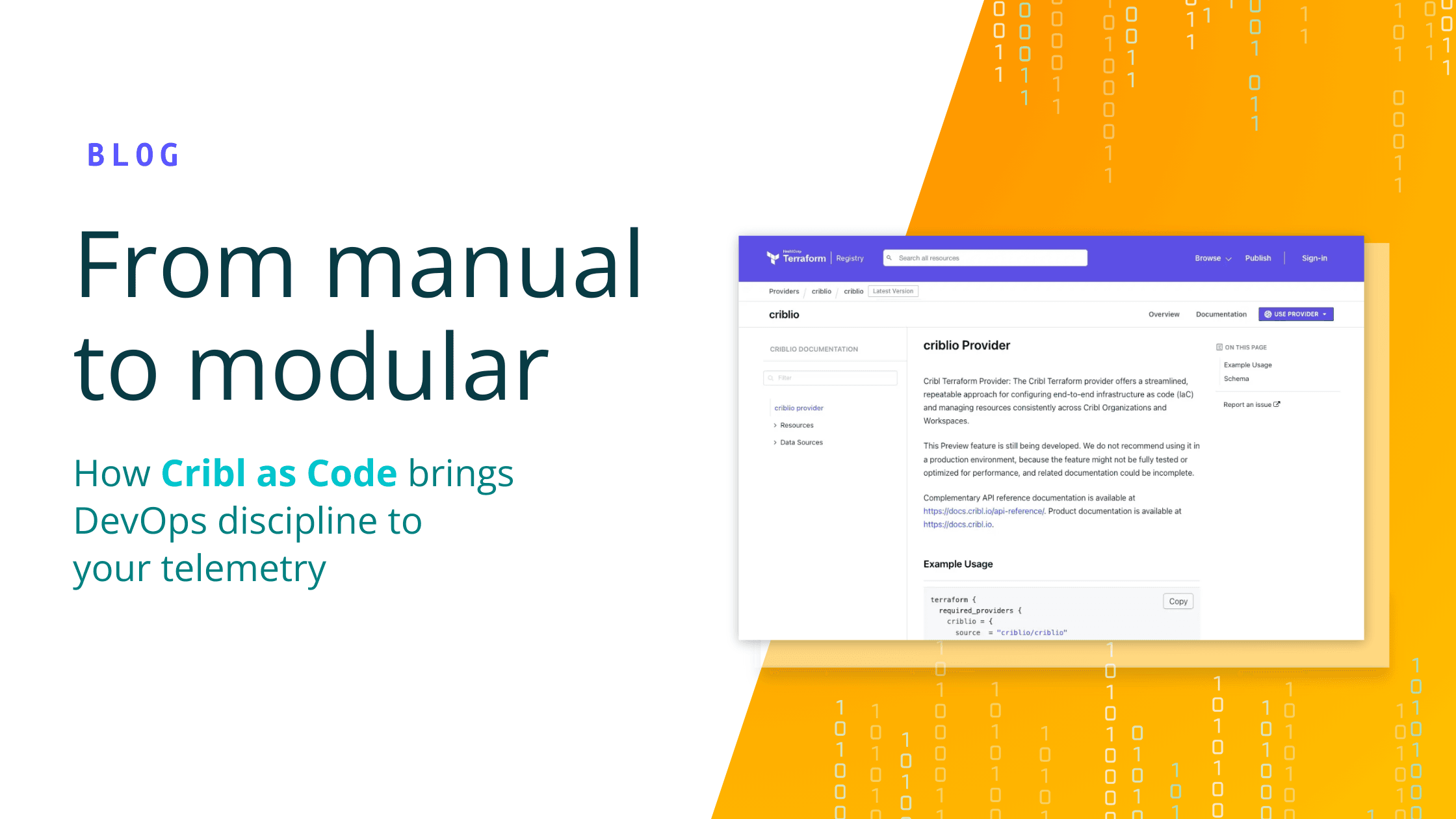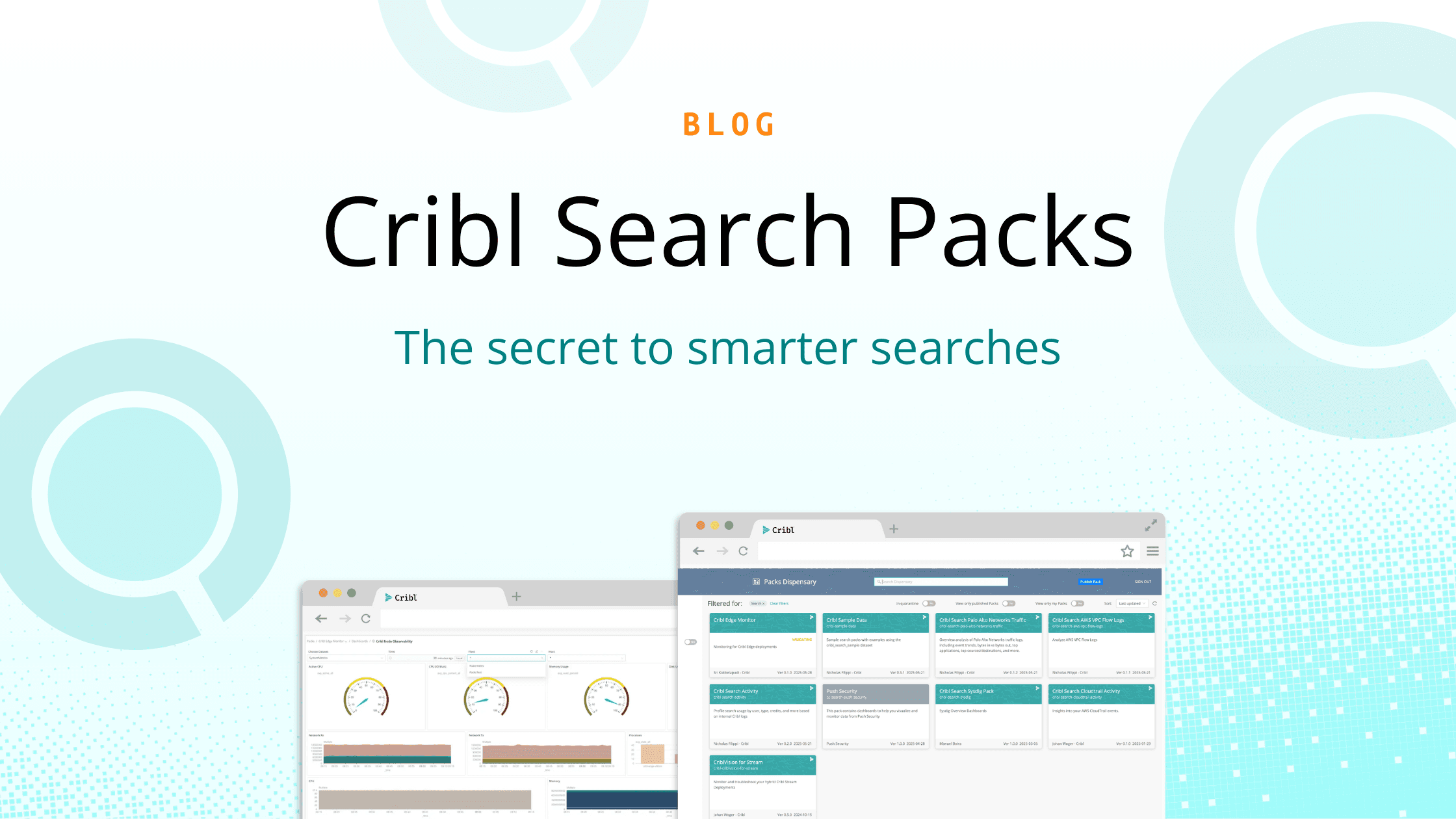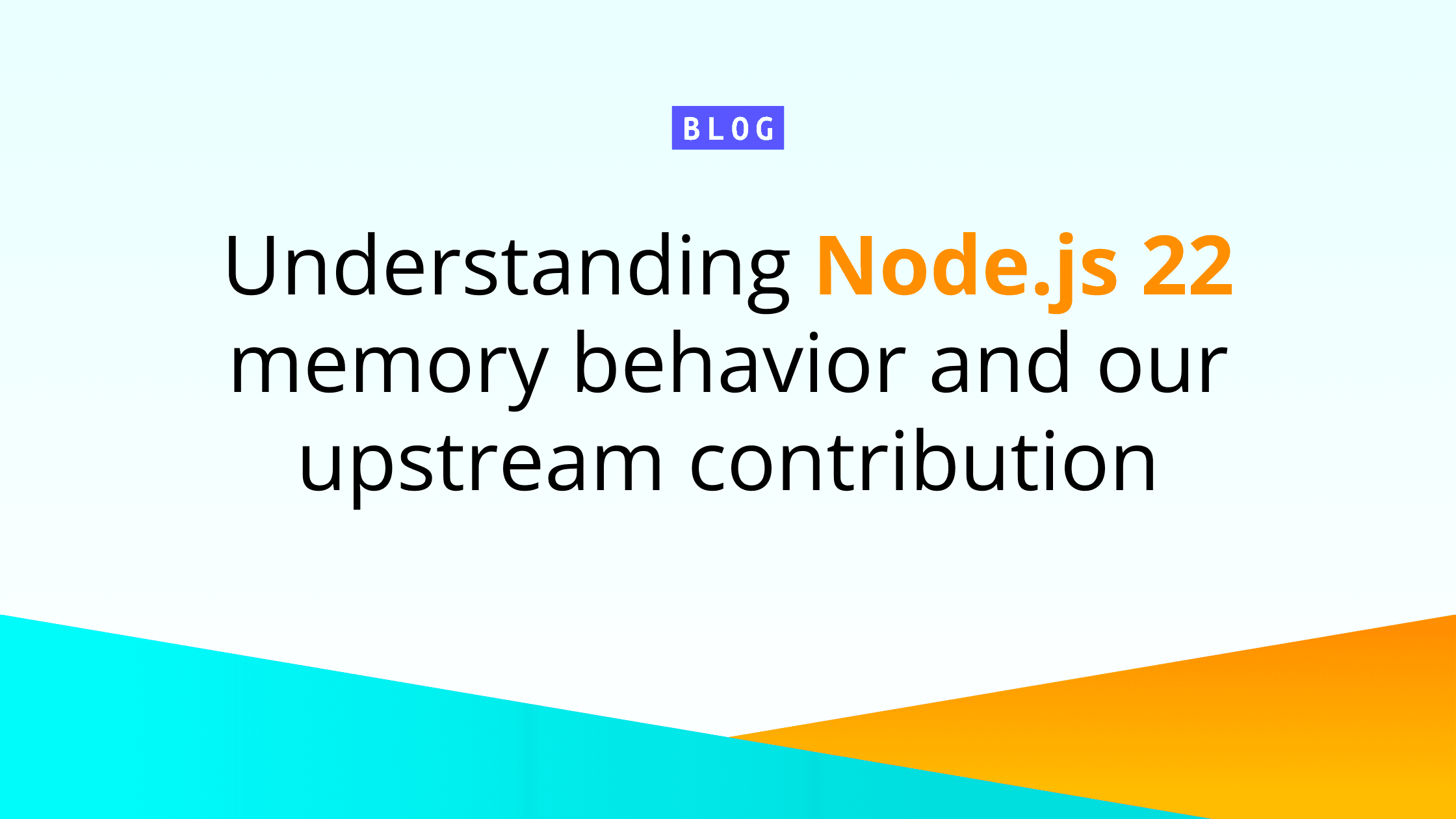The Model Context Protocol (MCP) promises to become the USB-C of enterprise software. With a unified interface for AI agents to query, control, and compose across tools, MCP feels like the obvious and seamless future for integrating disparate applications.
For enterprise software vendors, MCP is exciting but presents an existential threat. Should they embrace it and risk becoming undifferentiated backend infrastructure, hidden behind layers of chatty AI tools? Or resist it and risk irrelevance as the hot new thing pulls the oxygen from the room?
Here’s the tension that every modern SaaS company needs to reckon with.
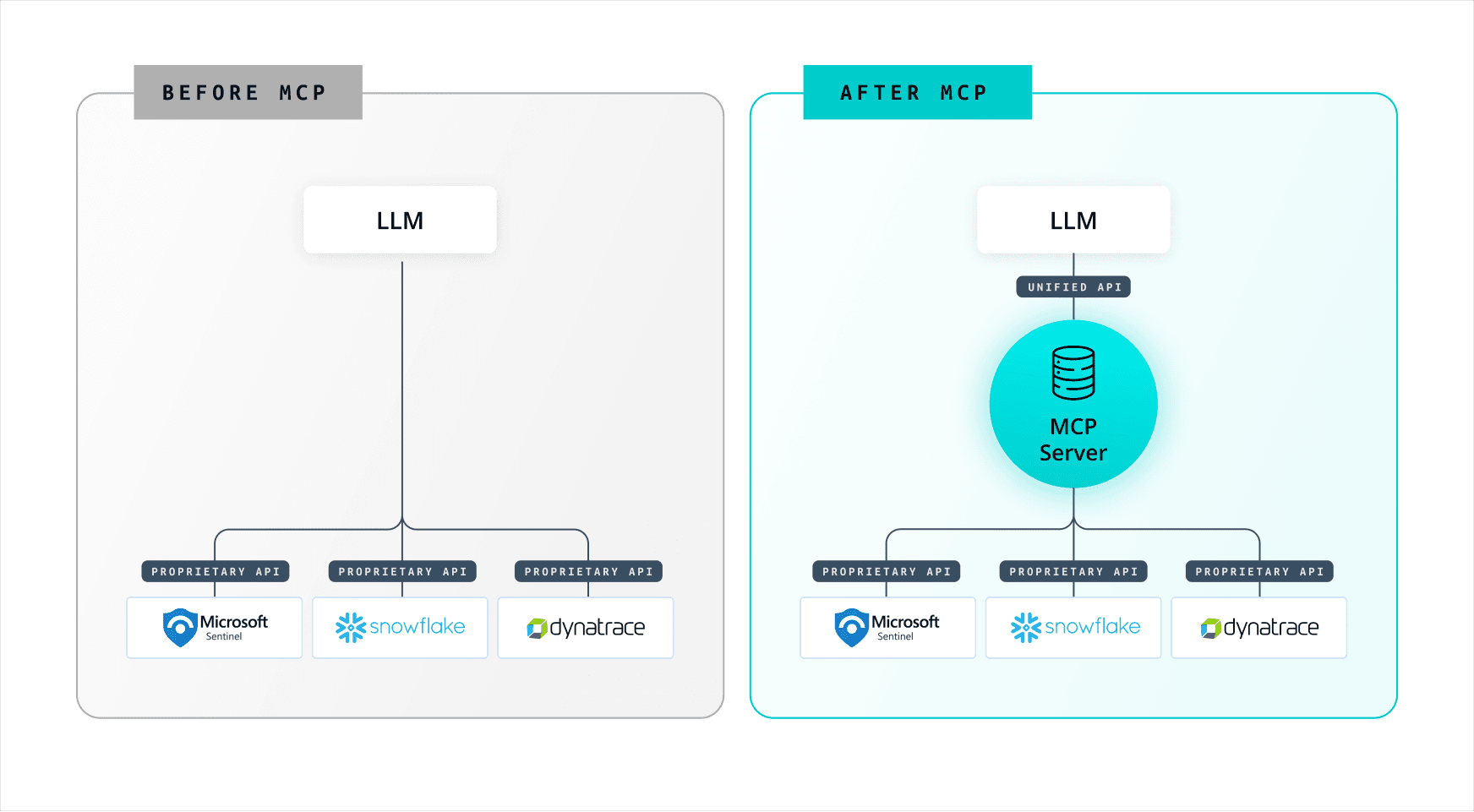
Why Incentives Diverge: SaaS vs. MSPs and Integrators
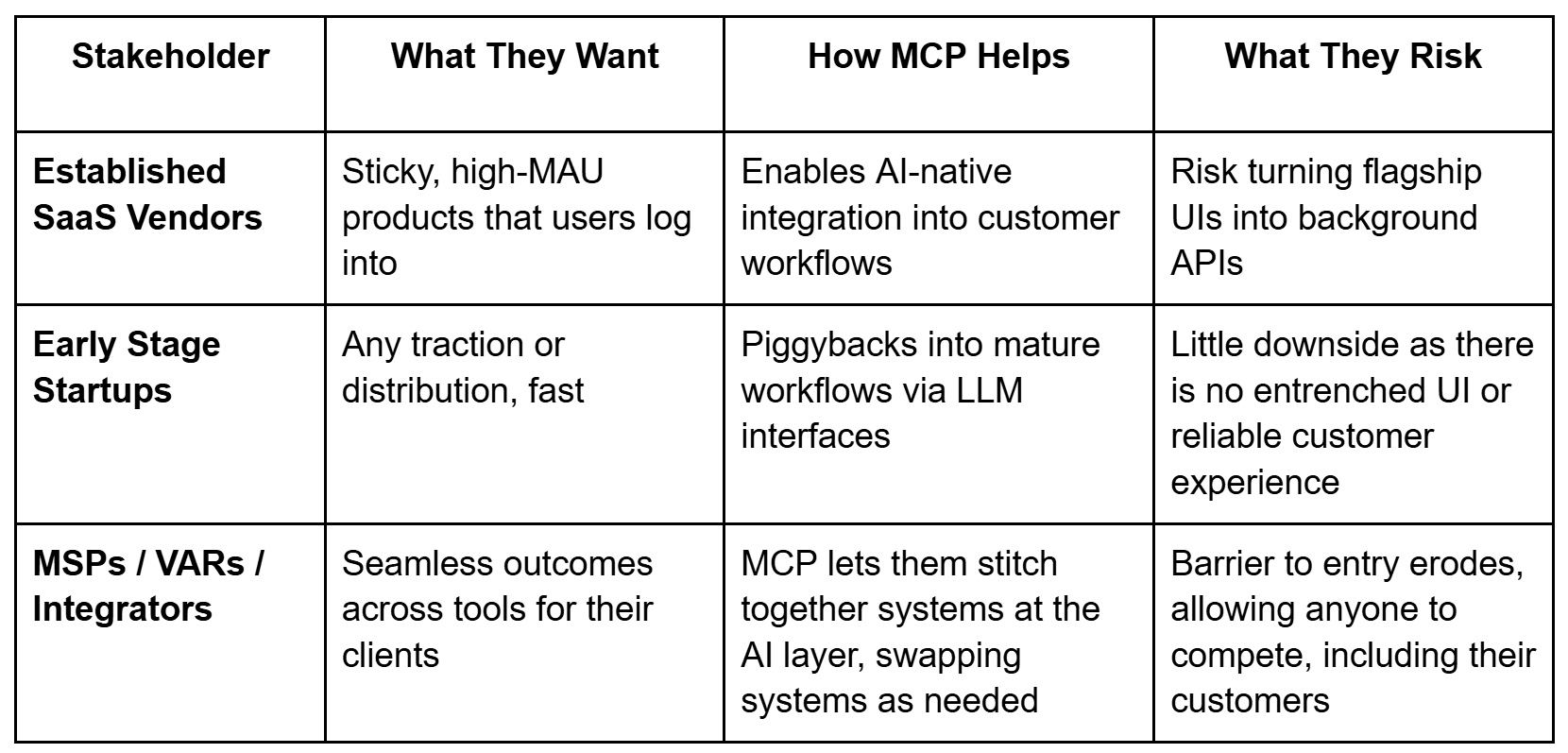
MCP is a dream for systems integrators and AI platform teams. But for SaaS vendors with established user interfaces and usage-based metrics, it can feel like a trap door under your monthly active user (MAU) charts.
The Bear Case for SaaS Vendors: You Become “Dumb Infra”
Suppose you’re an incumbent SIEM or EDR vendor. Within your customer base, your product is dug in like a tick. The only way to get data in is via your agents, and proprietary dashboards are the only way data gets out. Things are good for a long time, but one of your product managers bends to user pressure and drops an MCP server into the product.
Now, anyone with an LLM (like Claude, Gemini, or GPT-4o) can retrieve it on the user’s behalf and render it elsewhere. Useful? Absolutely. But now your product is no longer where the value is seen. You’re plumbing.
And if that data is exposed without constraint, it’s not just your UI that’s at risk – it’s your brand, your pricing model, your relationship with the end user.
There’s an old joke in IT that infrastructure is what we call the layer we don’t care about. Nobody wants to be infrastructure.
The Bull Case: You Become Essential Infrastructure
Let’s flip it around. If AI-native interfaces become the norm for search, automation, and investigation, and you don’t expose your system over MCP, customers may choose something else entirely. The cost of staying proprietary could be losing 100% of the opportunity.
In this light, MCP isn’t a threat, it’s another distribution channel. You’re not giving up control, instead you’re gaining surface area.
A Pragmatic Path
Differentiate by Audience:
End Customers: Support MCP to stay relevant in LLM-powered workflows. AI is becoming the new UI. Don’t sit out!
Partners / Resellers / MSPs: Be more selective. Their incentives often push your product down the stack. Gate sensitive MCP endpoints, or require explicit approval.
Redefine Engagement:
MAUs aren’t just logins anymore. Track API and MCP usage as legitimate engagement.
Monetize access, not clicks. If value is moving to the AI layer, your pricing and success metrics should move with it.
Design for Value Capture:
Don’t just expose raw data. Expose opinionated, structured, useful summaries that tie back to your core product.
Meter when you give away the context so you can sell the control. If someone’s using your data to drive decisions, you’re still in the value loop.
Bottom line
There’s a tendency in Silicon Valley to think it’s game-set-match for everything that came before when a new technology like MCP is announced. That is rarely the case. MCP is new for AI, which is also new despite the gallons of digital ink spilled by journalists fawning over funding rounds. We’ve yet to see the bull or bear case come to fruition but it’s important to take the long view for your products and your company.


